-----
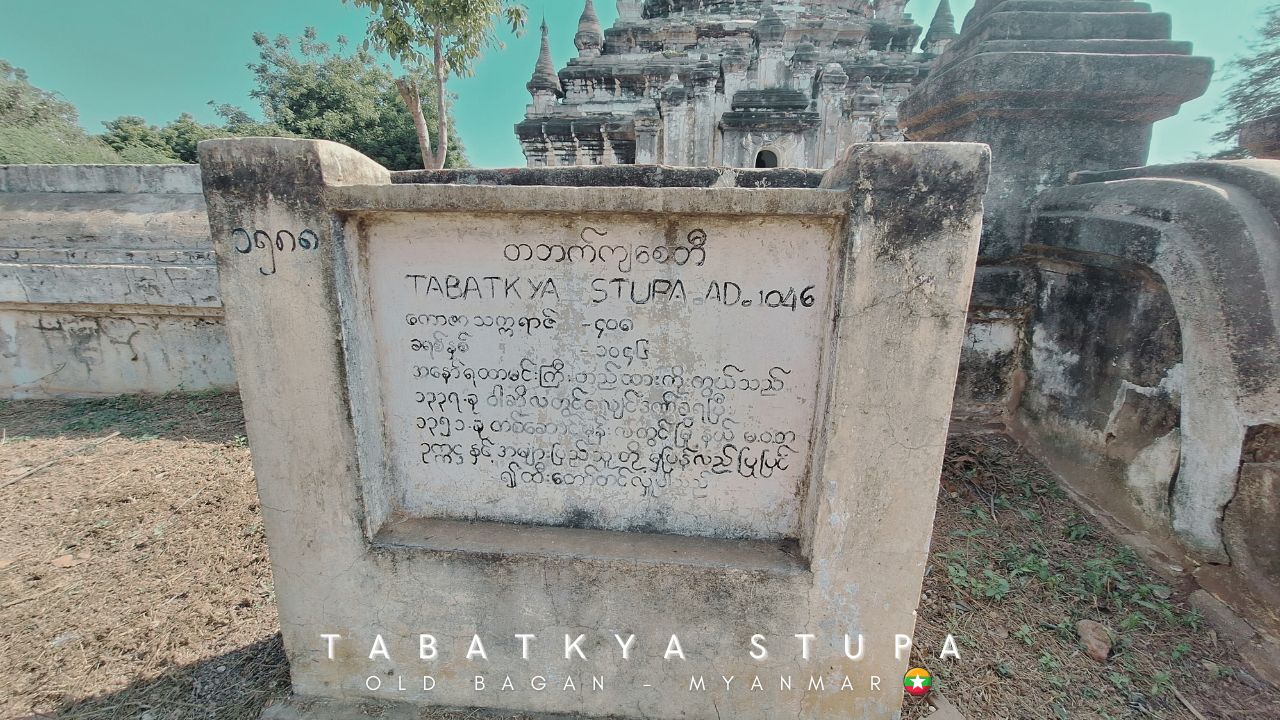
Someone once ask me what my favorite place to travel? Honestly, it's a question that's both easy and difficult to answer, cause every place have its own reasons for being love or disappointed. However, I don't think I've ever been disappoint by any of the places I've visited and become my travel destinations.
But, looking back, I can say that this place has a very different side from the previous ones. I've said it many times: Old Bagan.

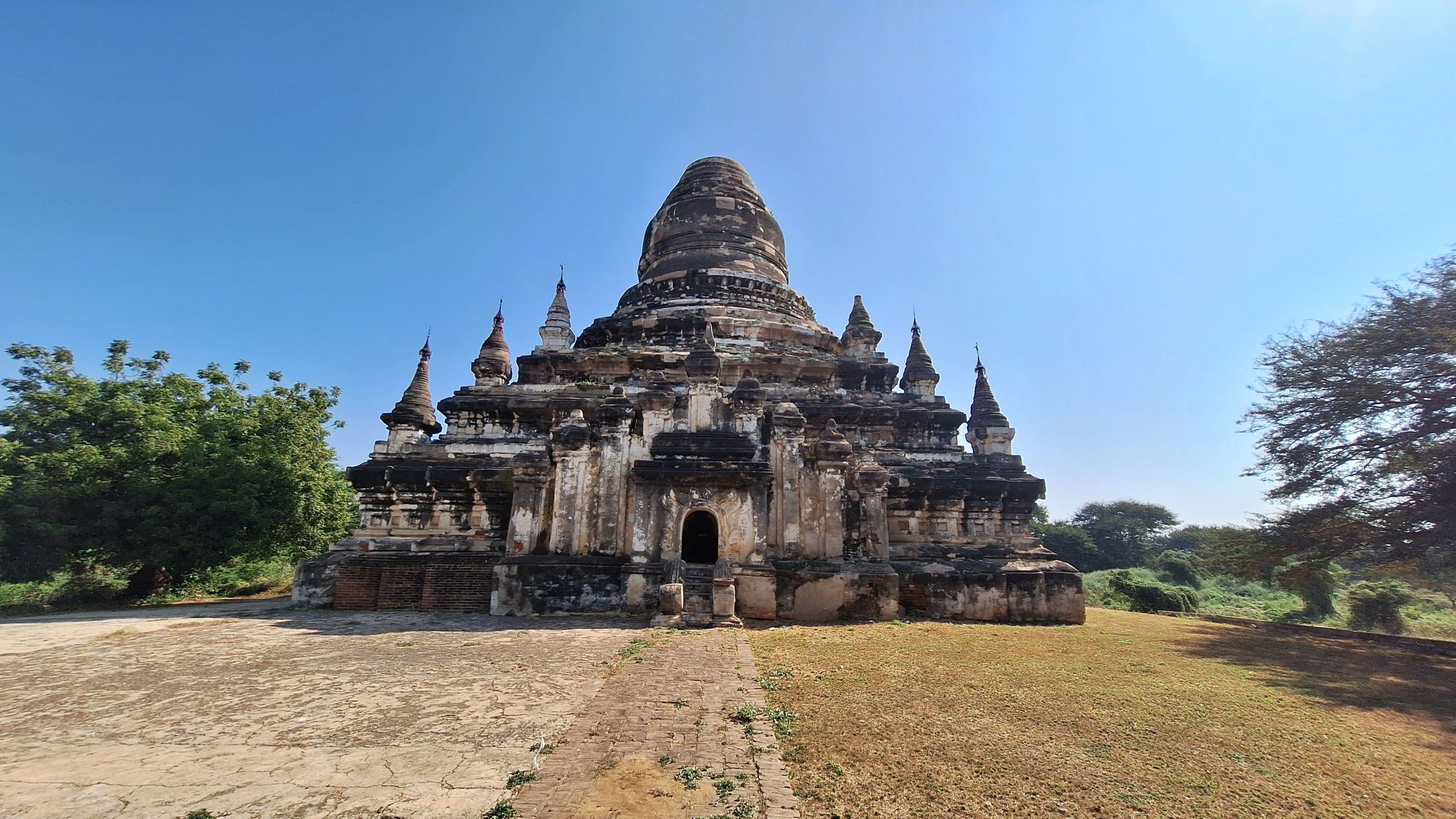

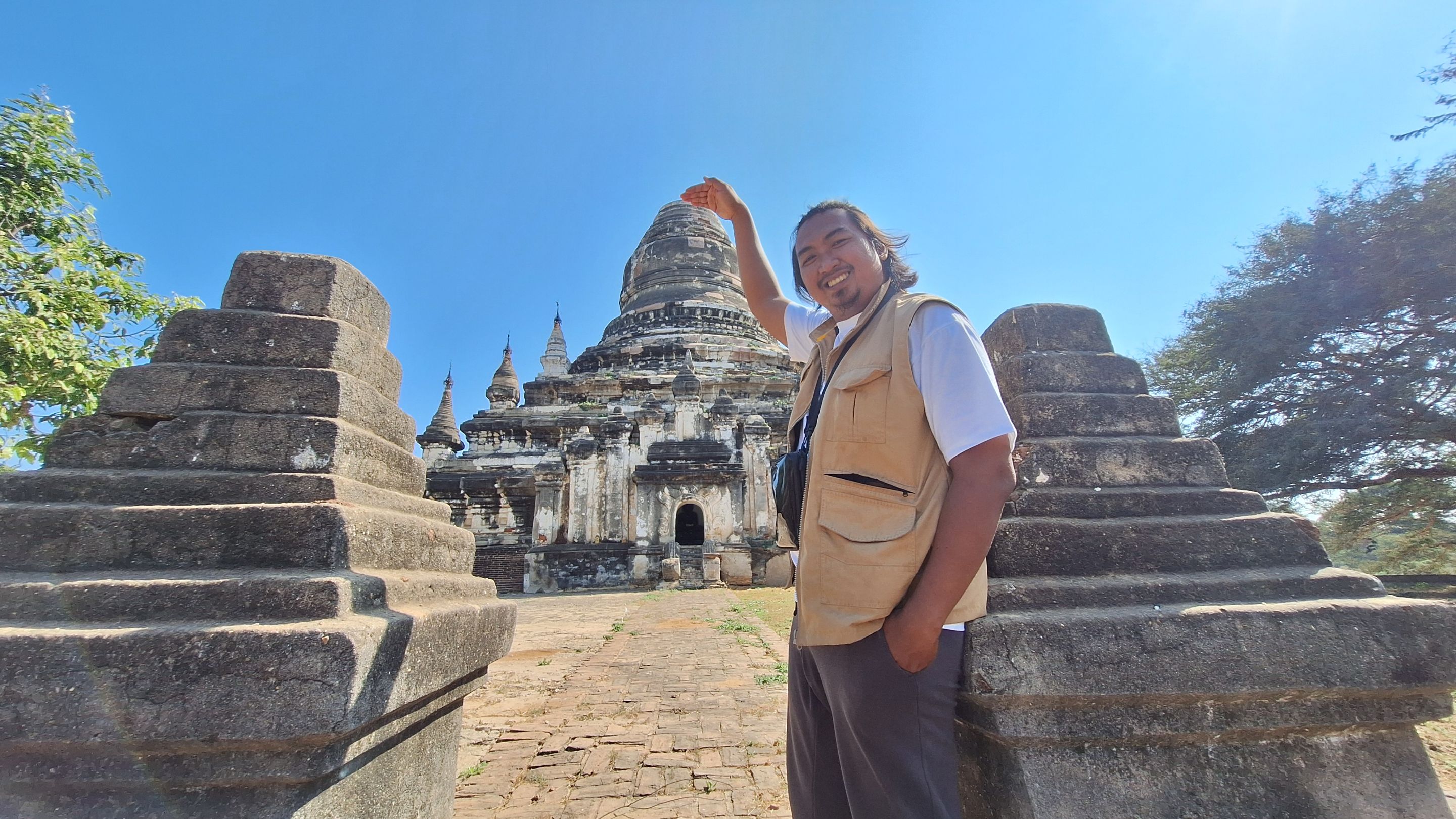
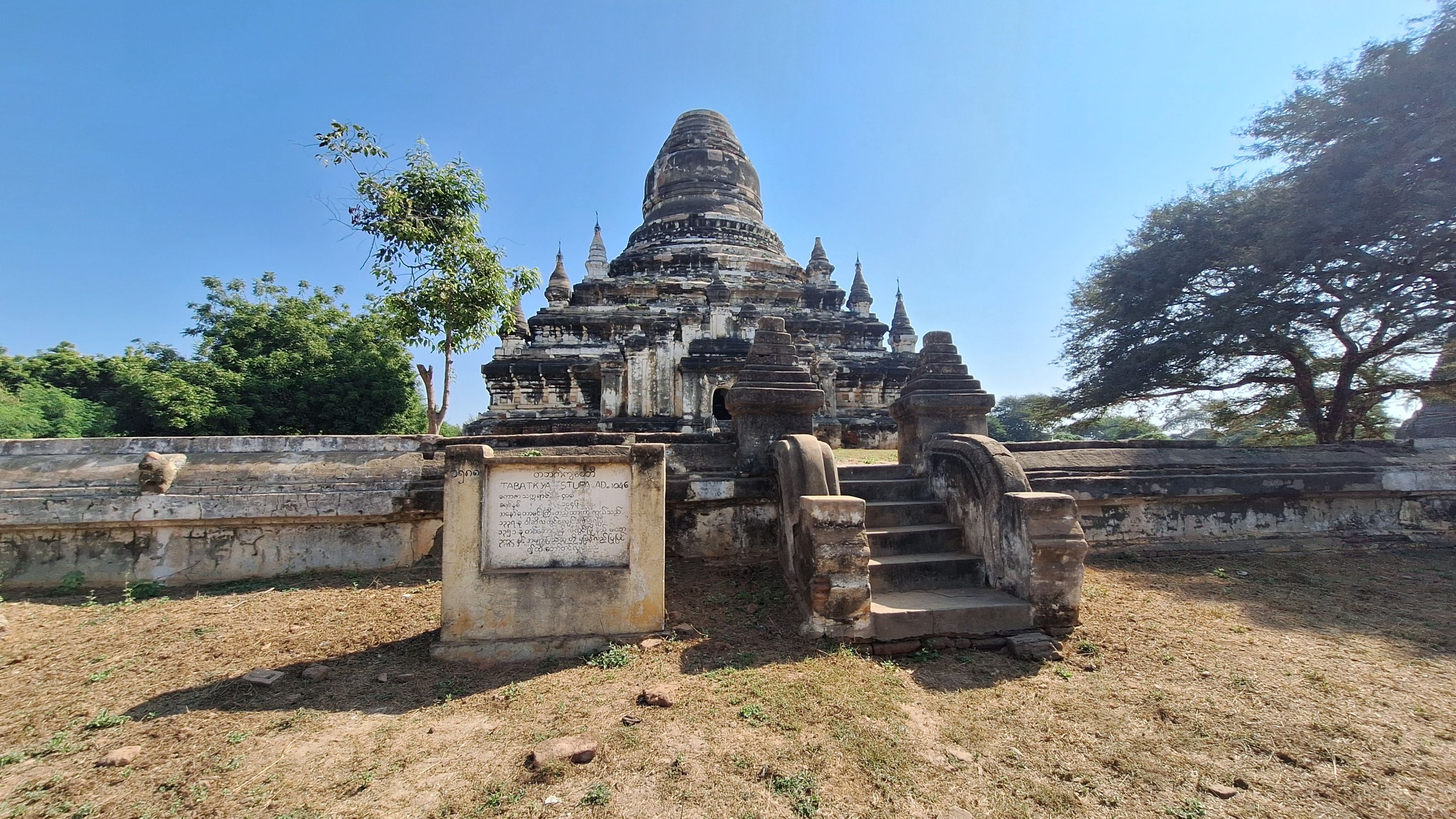
There are many places to visit, and every corner have its own story. One part of Old Bagan's story is Tabatkya Stupa. It's either a stupa or a temple, but it seems to be one of the stupas that renovated.
From its shape, we can see that this temple is truly different. Usually, if you scroll down through all the content in Old Bagan, this is one of the buildings that isn't made of brick on the outside. It seems more like a cement mixture with a white base, which is very clearly visible.
Also, the abundance of black moss has begun to cover part of the temple's base. Frankly, this temple appears to be well-maintained, but it's not crowded, in fact, it's very quiet. There are no signs of frequent worship here, even though the stupa or temple dates back to 1406 AD, as clearly inscribed on a handwritten stone.

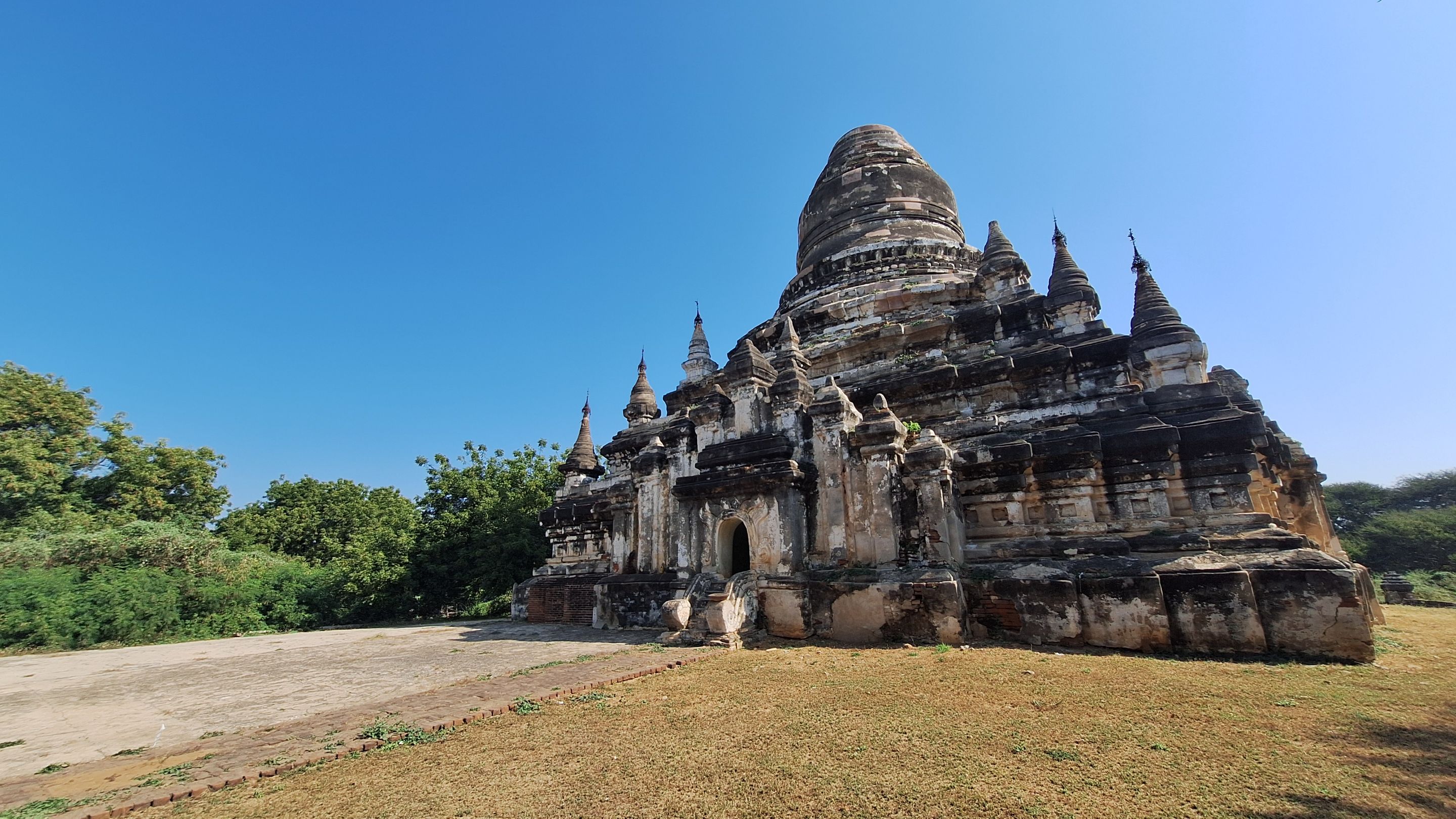
Indeed, you can see something simple, yet resembling a nugget of gold, in every temple in Old Bagan. Almost all the temples were built centuries ago, after civilizations brought here from other regions established a great civilization at that time.
As I mentioned, this was a form of legitimacy for the rulers of that era. All kings and leaders constructed large buildings for their own benefit and the benefit of the people, fostering development, signaling that this place was progressing day by day.
Each leader also had his own preferences regarding the architecture, materials, and form of the temple. The larger it was, the more majestic it appeared, depending on the king's influence.


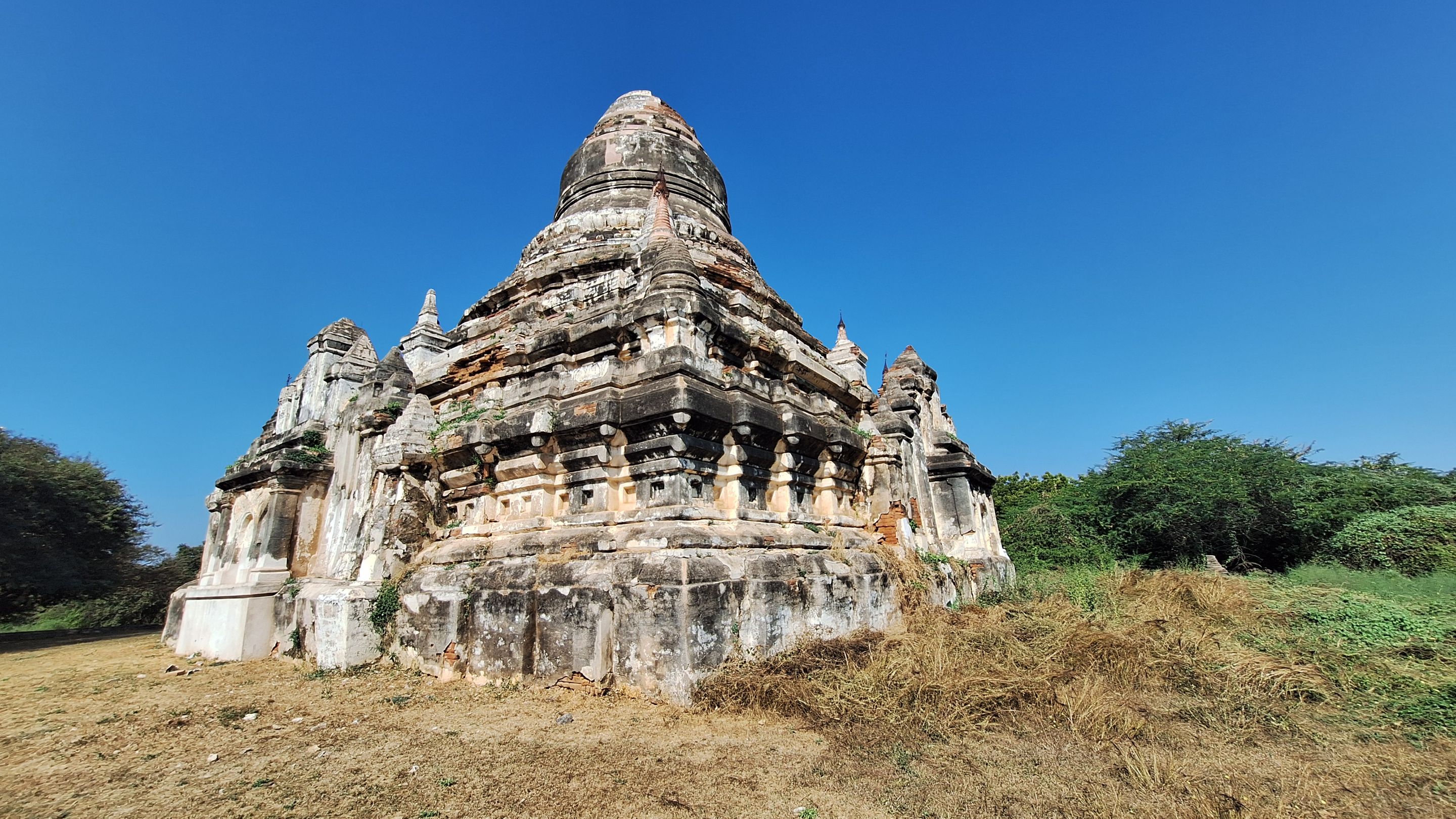
I saw a Buddha statue inside, which appeared very small and difficult to fit through this gap. It's possible to enter, but for my rather large frame, it can be very difficult, and it might not be allow. I only look from the outside, and that's all I can get a photo of.

The grounds around the temple are still very spacious, and even the fenced courtyard is quite large. It can accommodate many people, but unfortunately, there no pilgrims there at that time. I was very curious to see if this temple was still in use, how crowded it was, and what kind of worship it was for.
